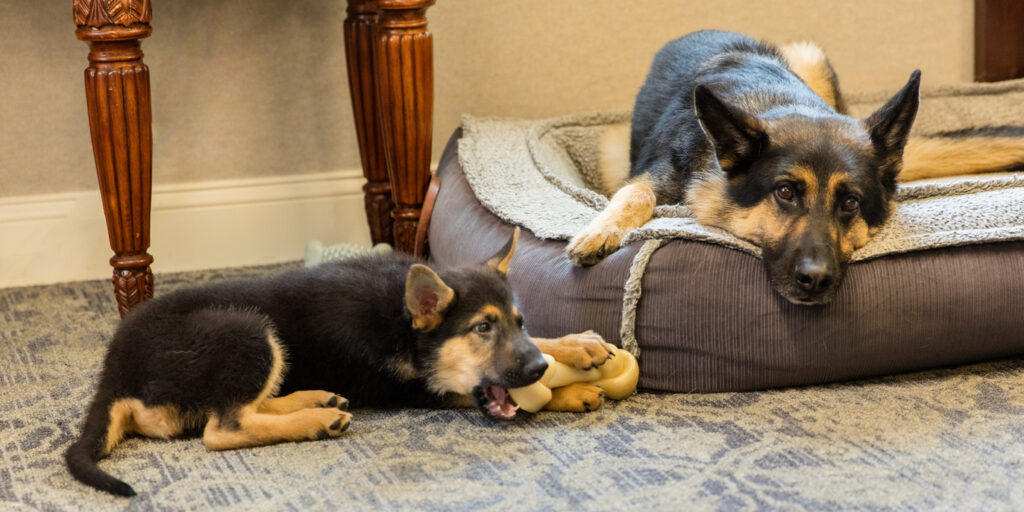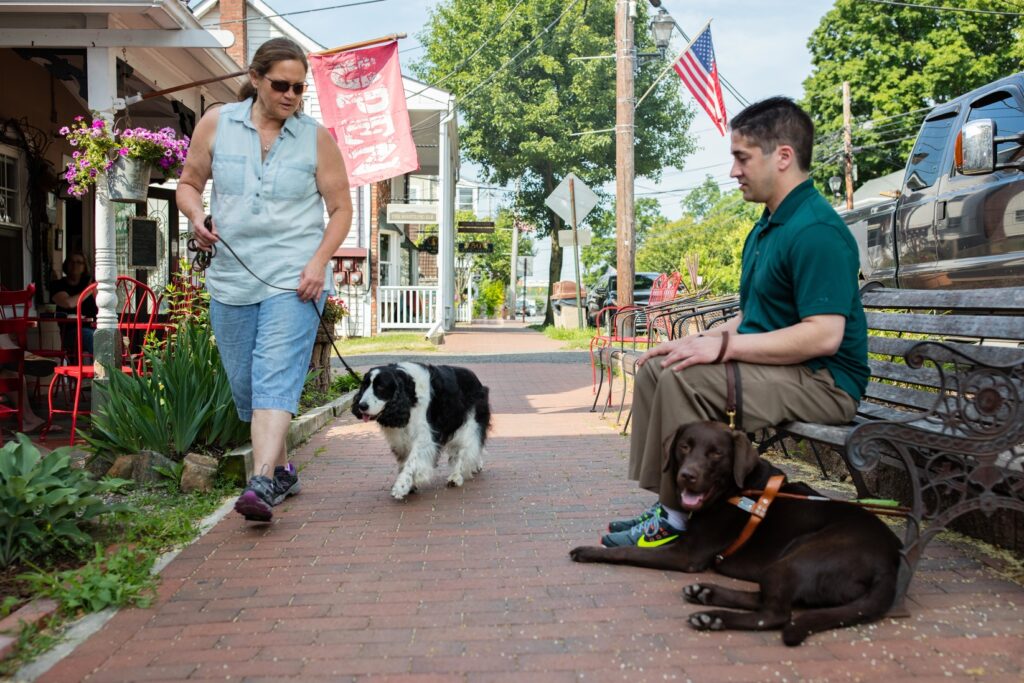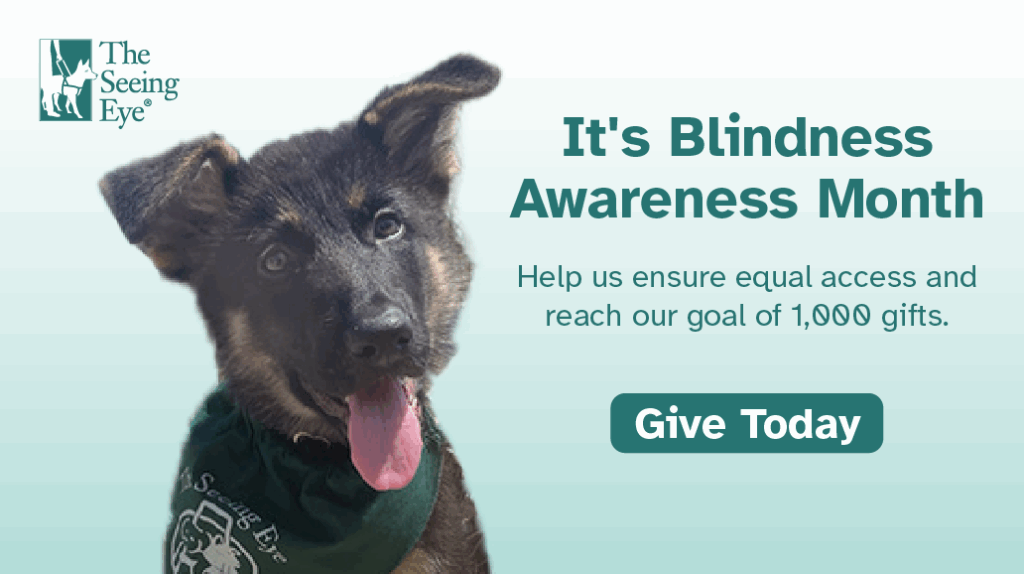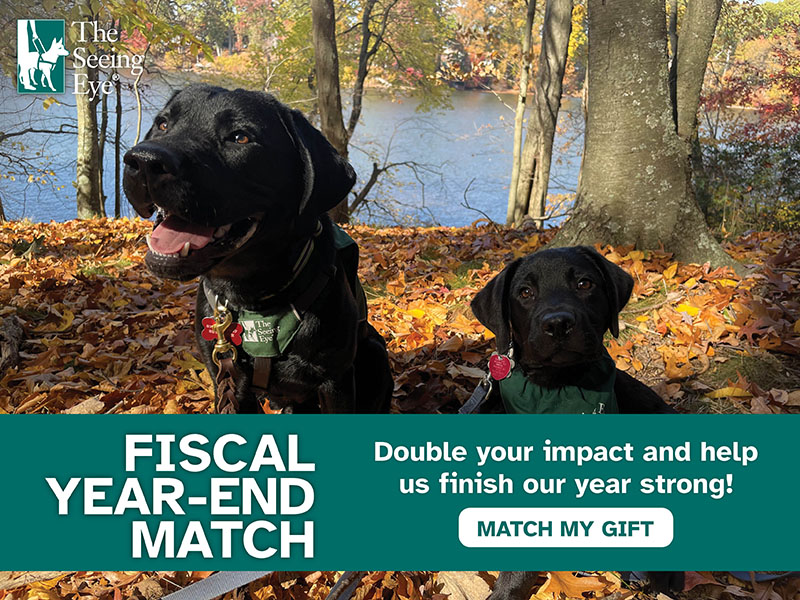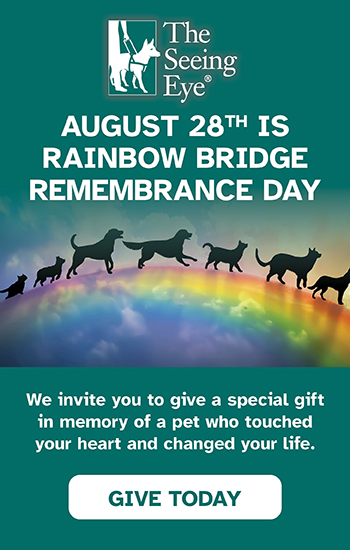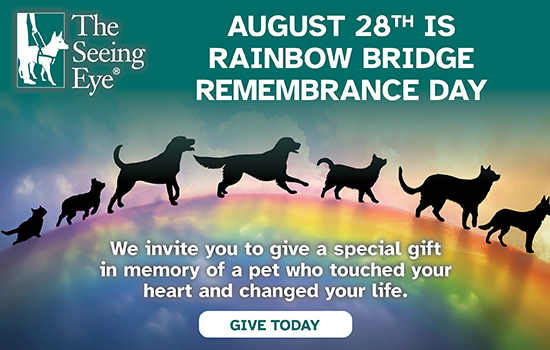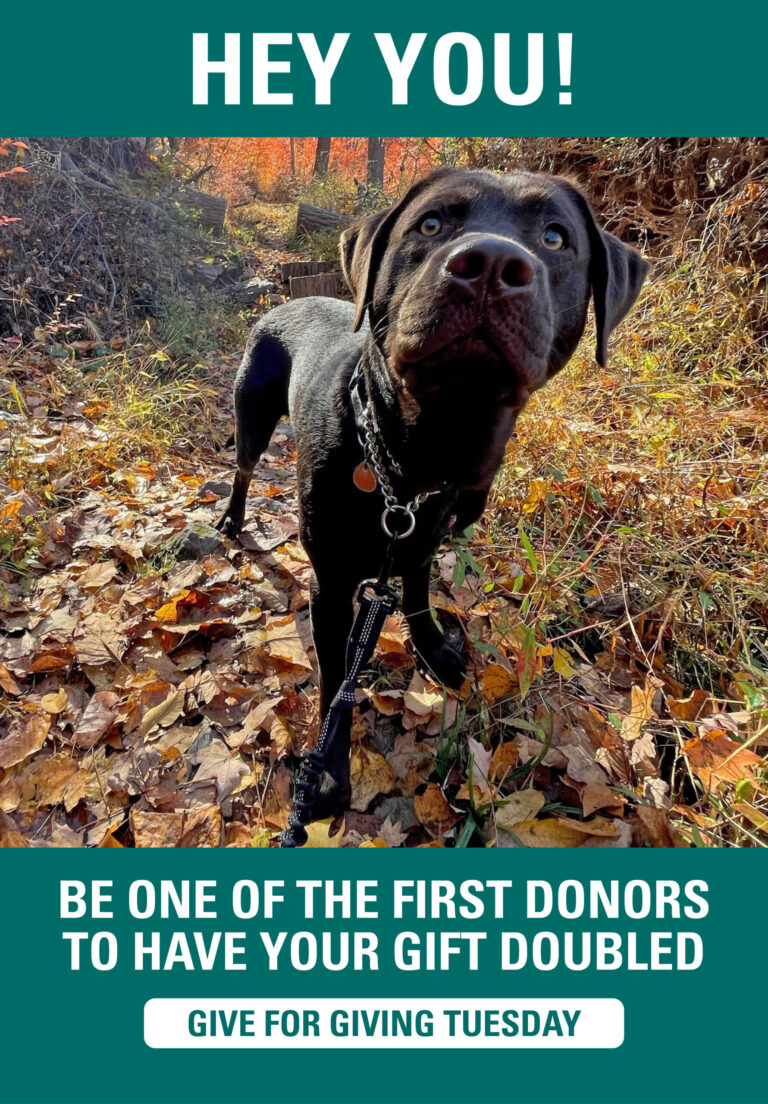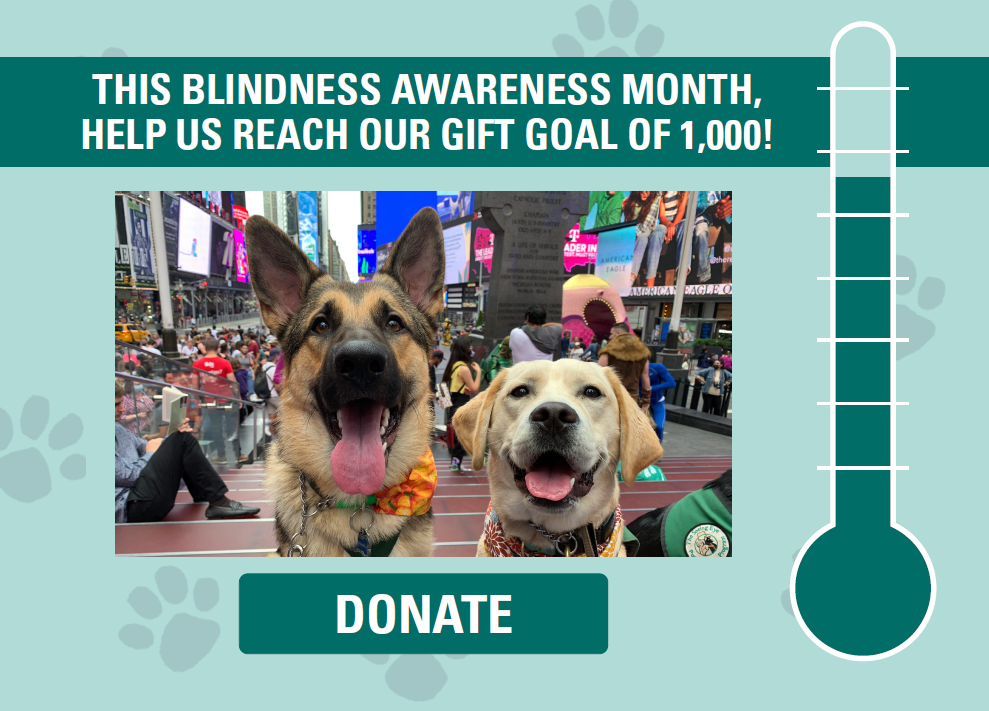Access & Advocacy
Guide Dog At Work
Working With Guide Dogs
To the casual passerby, the confident strides of a blind person with a guide dog seem almost effortless. Yet in reality, it takes a great deal of skill and concentration for guide dogs to do their work.
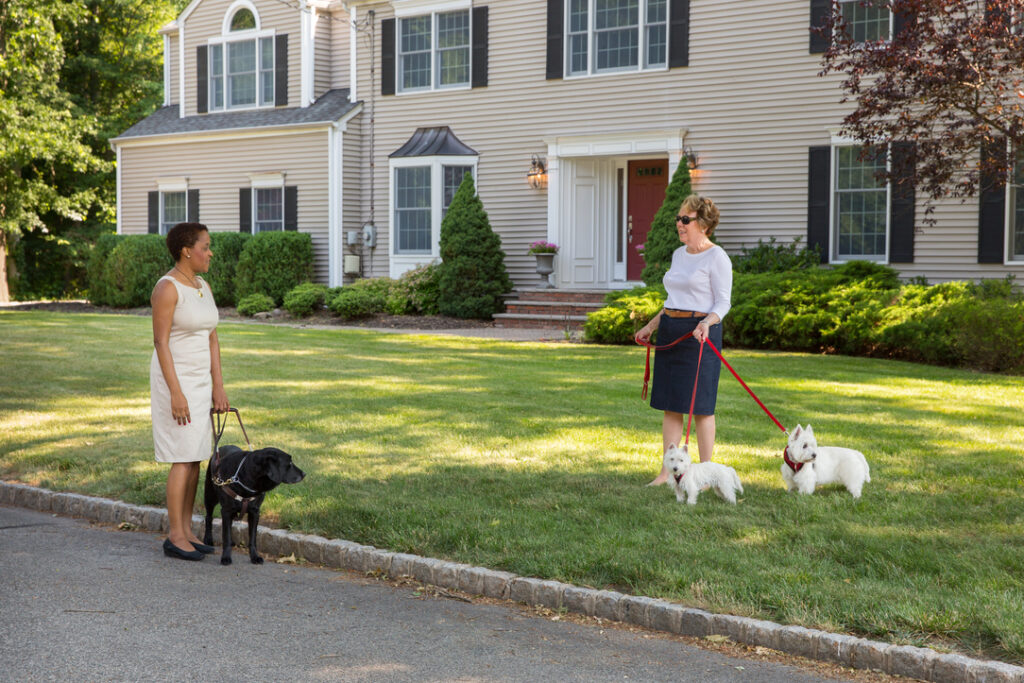
As puppies, they’re taught basic obedience, and they’re introduced to all kinds of situations that they may come across as guides. Later, in their formal training, the dogs are taught to avoid obstacles, both stationary and moving, that may be in the blind person’s way. They learn to stop for steps going up or down, and refuse to move forward when it’s not safe.
Once trained, the guide dog is paired with someone who cannot see. The two learn to work together as a team. The blind person decides where to go and how to get there, while the dog safely guides its partner along the chosen route.
Both team members rely on one another to move about safely and efficiently. But sometimes guide dogs can be distracted by other dogs. This can be dangerous for both the blind person and the guide dog.
That’s why we’ve created the Guide Dog at Work campaign. We’re calling on all pet owners to be sure that their dogs never get too close to a guide dog team. This will help guide dogs to stay focused on their work at all times — the team’s safety depends upon it!
It's Not All Work And No Play!
Some people wonder if guide dogs ever get a break. You bet they do! It’s not just all work and no play! When they’re not in harness, guide dogs romp, play, nap and take part in family life much the same way as ordinary pets. There’s also lots of time on the job when guide dogs can rest, relax and enjoy love and attention from their blind partners.
